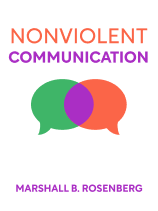

This article is an excerpt from the Shortform book guide to "Nonviolent Communication" by Marshall B. Rosenberg. Shortform has the world's best summaries and analyses of books you should be reading.
Like this article? Sign up for a free trial here .
What are the four nonviolent communication steps? How can applying these steps help you connect with people on a deeper, more meaningful level?
Nonviolent communication (NVC) is a framework for interacting with ourselves and others with compassion and empathy. There are four nonviolent communication steps: observing, identifying feelings, connecting feelings to needs, and making requests.
Learn how to apply the four nonviolent communication steps, according to Marshall Rosenberg.
The 4 Nonviolent Communication Steps
Nonviolent Communication (NVC) is a way of communicating with oneself and others with clarity, kindness, respect, and compassion. The author, Marshall B. Rosenberg, was drawn to the idea of encouraging compassion after witnessing the deadly 1943 Detroit race riots as a child. He founded the Center for Nonviolent Communication, a nonprofit organization that trains community leaders in the four nonviolent communication steps:
Step 1: Observe Without Evaluating
One fundamental component of NVC is separating observation from evaluation. Evaluative language is a form of moralistic judgment that can easily alienate others by reducing them to a label rather than making a human connection. Instead, reference specific behaviors you observe—like “John used two racial slurs in our conversation yesterday” rather than “John is a racist”.
Step 2: Identify and Express Feelings
After making an observation, the next step of NVC is to identify and express your feelings. Feelings refer to internal physical and emotional states, not judgments or interpretations of external events.
As a general rule, if the words “I think” can replace the words “I feel,” then whatever is being expressed isn’t really a feeling. For example, “I feel I did a good job” isn’t expressing a feeling because you can change it to “I think I did a good job” without altering the meaning.
Step 3: Connect Feelings to Needs
Every feeling arises from a particular need that is or isn’t being met. Identifying the need underlying a certain feeling helps you get clear on what your goals are for this communication, but it’s not always easy to identify these needs. For reference, here is a list of universal needs:
- Autonomy (the right to choose your own goals and values in life)
- Celebration (to celebrate happy life events and to mourn our losses)
- Integrity (authenticity, creativity, meaning, self-worth)
- Interdependence (acceptance, empathy, love, respect, support)
- Play (fun, laughter)
- Spiritual Communion (beauty, inspiration, peace)
- Physical Nurturance (air, food, water, shelter)
Step 4: Make Positive and Specific Requests
If you want others to meet your needs, it’s more helpful to request what you do want them to do than what you don’t want them to do. Making negative requests (like “Don’t do that” or “I’d like you to stop interrupting me”) gives the listener very little information about what you’re actually requesting.
Requests should also be specific. For example, if you ask someone for “help,” they’ll respond based on their interpretation of “help,” which may not be what you had in mind.

———End of Preview———
Like what you just read? Read the rest of the world's best book summary and analysis of Marshall B. Rosenberg's "Nonviolent Communication" at Shortform .
Here's what you'll find in our full Nonviolent Communication summary :
- How nonviolent communication lets you have more compassion for yourself
- Why nonviolent communication is the key to fostering authentic connections with others
- The 4 steps to expressing yourself with empathy towards others






